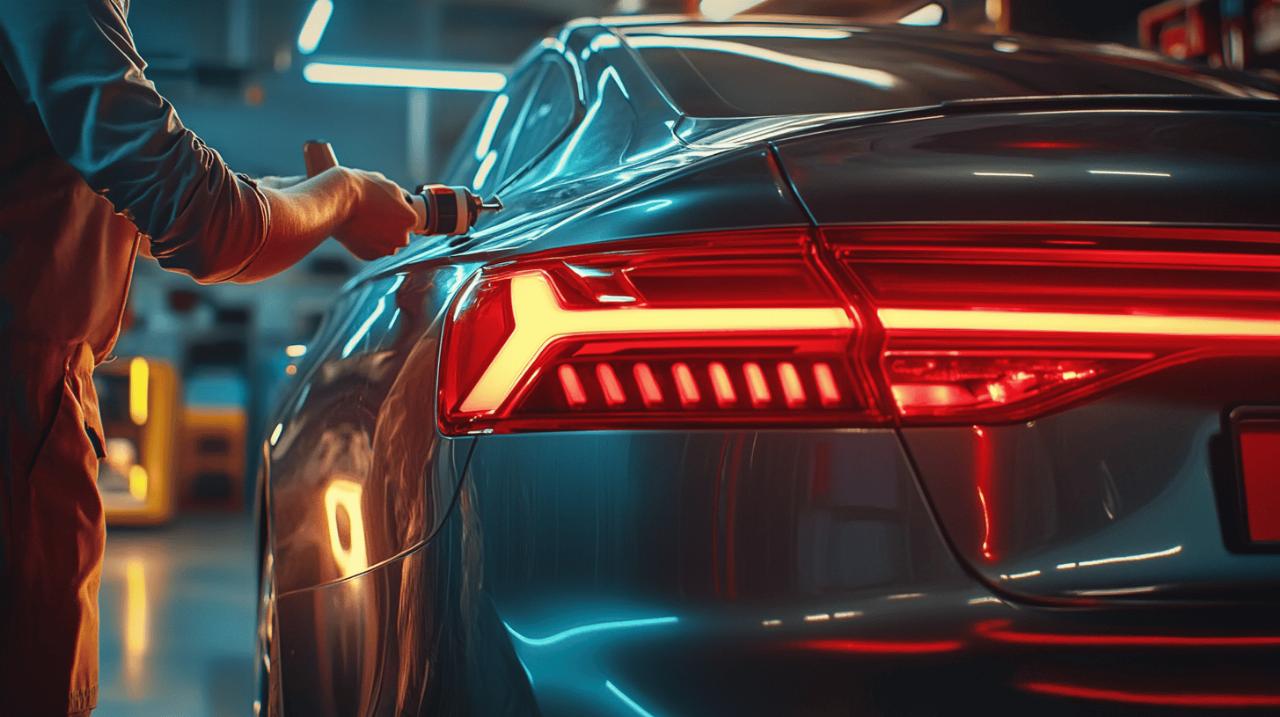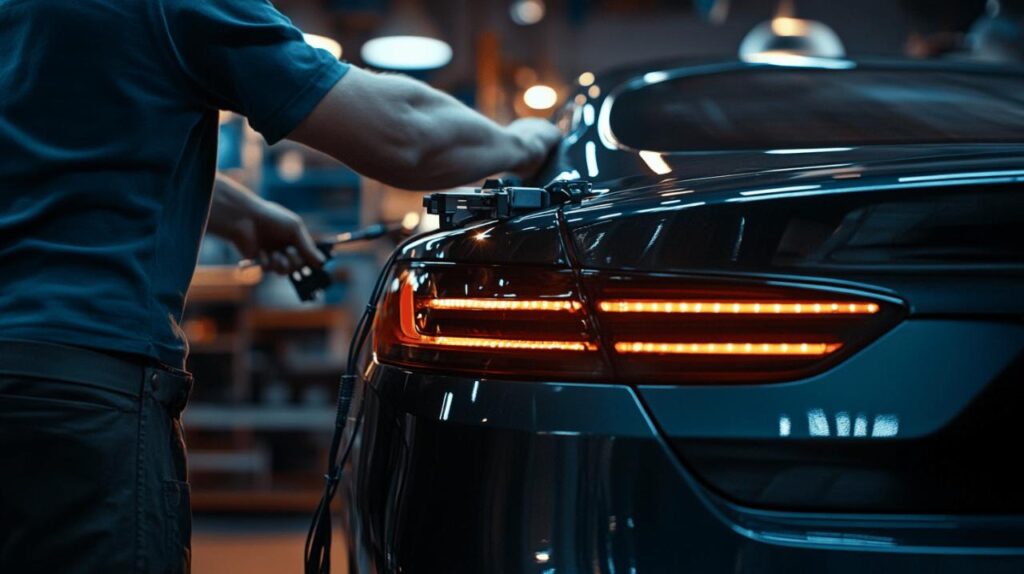Parking in tight spots and manoeuvring in reverse can be a right faff, particularly in bustling urban environments or cramped car parks. A reversing camera offers a practical solution to this common challenge, providing drivers with enhanced visibility and significantly reducing the risk of accidental collisions. Whether you're driving a family saloon, a commercial van, or even a motorhome, installing a reversing camera can transform your driving experience, making it safer and far less stressful. This comprehensive guide will walk you through the process of selecting, preparing, and installing a reversing camera system, ensuring you achieve a professional finish that enhances both safety and convenience.
Selecting the Right Reversing Camera Kit for Your Vehicle
Choosing the appropriate reversing camera kit is the first and arguably most important step in the installation process. The market offers a wide variety of options, and understanding the differences between them will help you make an informed decision. Companies such as Sentinel Systems in Cirencester, Gloucestershire, specialise in vehicle safety equipment and offer a range of cameras, recording devices, monitors, and ultrasonic sensors tailored to different vehicle types. Whether you're kitting out a refuse vehicle, a minibus, or a heavy goods vehicle, selecting equipment that adheres to industry standards such as FORS, DVS, and PSS is essential for ensuring compliance and reliability.
Understanding wired versus wireless camera systems
One of the primary decisions you'll face is whether to opt for a wired or wireless reversing camera system. Wired cameras typically deliver superior image quality and a more stable connection, making them a popular choice for commercial applications in logistics, waste management, and food retail. However, the installation process can be more involved, requiring you to run cables through the interior of your vehicle. On the other hand, wireless cameras offer a simpler installation with fewer cables to manage, making them an attractive option for those seeking a cleaner, less intrusive setup. The trade-off is that wireless systems may experience occasional signal interference or slightly reduced image quality, particularly in areas with heavy electronic traffic. For motorhomes, wireless cameras are often favoured for their ease of installation, while commercial operators may lean towards wired systems for their robustness and clarity.
Essential Features to Look for in a Quality Reversing Camera
When evaluating different reversing camera kits, several key features should be at the forefront of your considerations. Image quality is paramount, as a clear, high-resolution picture is essential for accurately judging distances and spotting obstacles. The field of view is another critical factor, with wider angles providing better coverage of the area behind your vehicle. Look for cameras that offer a field of view of at least 120 degrees to ensure comprehensive visibility. Durability and weather resistance are equally important, especially given the unpredictable British climate. A waterproof camera with a high ingress protection rating will withstand rain, mud, and other environmental challenges. Additionally, features such as parking lines overlaid on the display can assist with judging distances and guiding your vehicle into tight spaces. Some advanced kits also include recording devices, monitors with multiple channels, and additional equipment like ultrasonic sensor kits or left turn alarms, which can further enhance safety and functionality.
Preparing your vehicle for reversing camera installation
Proper preparation is the foundation of a successful installation. Taking the time to plan your approach will save you considerable effort and help you avoid common pitfalls. Before you begin, gather all the necessary tools and components, including the camera, display, cables, mounting brackets, and any additional hardware provided in your kit. It's also wise to have a few basic tools on hand, such as a drill, screwdrivers, cable ties, and electrical tape. Familiarise yourself with the layout of your vehicle's interior and identify potential cable routes that will keep wiring concealed and protected from damage.
Identifying Optimal Mounting Locations for Camera and Display
The positioning of both the camera and the display is crucial to the overall effectiveness of your reversing camera system. The camera is typically mounted near the registration plate at the rear of the vehicle, as this location provides a clear view of the area directly behind. Before drilling any holes, check for obstructions such as wiring or structural components that could interfere with the mounting process. Some vehicles may have pre-existing mounting points or grommets that can be utilised, simplifying the installation. For the display, common mounting locations include the dashboard or the windscreen. The display should be positioned within easy view of the driver but should not obstruct visibility or violate any regulations regarding dashboard clutter. In some cases, integrating the display with an existing monitor or infotainment system may be possible, offering a seamless and integrated appearance.
Mapping out cable routes through your vehicle's interior
Planning the route for your cables is an often-overlooked aspect of installation, yet it can make a significant difference to the finished result. Start by tracing a path from the camera at the rear of the vehicle to the display at the front. Look for existing cable runs or channels that you can utilise, such as those used for the rear wiper or other electrical components. In many vehicles, cables can be routed through the boot, under the side panels, and along the edge of the floor or ceiling. Use grommets or rubber seals where cables pass through metal panels to prevent chafing and potential electrical faults. For a truly professional finish, secure the cables with cable ties at regular intervals to prevent them from hanging loose or rattling. Taking the time to map out and execute a clean cable route will not only improve the appearance of the installation but also enhance the longevity and reliability of your reversing camera system.
Step-by-Step Guide to Mounting and Wiring Your Reversing Camera
 With your planning complete and your materials at hand, you're ready to begin the physical installation. This stage requires patience and precision, but by following a methodical approach, you'll achieve a professional and reliable result. Throughout the process, refer to the manufacturer's instructions, as specific kits may have unique requirements or recommendations. Companies like Sentinel Systems provide comprehensive guidance for their products, ensuring that even those new to vehicle modifications can complete the installation successfully.
With your planning complete and your materials at hand, you're ready to begin the physical installation. This stage requires patience and precision, but by following a methodical approach, you'll achieve a professional and reliable result. Throughout the process, refer to the manufacturer's instructions, as specific kits may have unique requirements or recommendations. Companies like Sentinel Systems provide comprehensive guidance for their products, ensuring that even those new to vehicle modifications can complete the installation successfully.
Securing the Camera Unit Near the Registration Plate
Begin by removing the registration plate from the rear of your vehicle. This will give you access to the mounting area and allow you to position the camera accurately. Most reversing cameras come with a bracket that can be attached using screws or adhesive pads. If drilling is necessary, take care to avoid damaging any wiring or structural components behind the mounting surface. Once the bracket is secure, attach the camera and adjust its angle to ensure it provides an optimal view of the area behind the vehicle. Some cameras allow for fine-tuning of the angle, which can be useful for compensating for uneven surfaces or different mounting heights. After securing the camera, run the cable from the camera unit into the interior of the vehicle, either through an existing grommet or by drilling a small hole and sealing it with a rubber grommet to prevent water ingress. Ensure the cable is routed in such a way that it is protected from sharp edges and moving parts.
Connecting power supply to your reverse light circuit
Powering your reversing camera correctly is essential for ensuring it activates automatically when you engage reverse gear. The most straightforward method is to tap into the reverse light circuit, which provides power only when the vehicle is in reverse. Locate the reverse light wiring, usually found at the rear of the vehicle near the tail lights. You may need to use a multimeter to identify the correct wire. Once identified, use a wire tap or solder the camera's power lead to the reverse light wire, ensuring a secure and insulated connection. This method not only powers the camera but also serves as a trigger, ensuring the display switches on automatically when you select reverse. Alternatively, some kits allow for a connection to the cigarette lighter or accessory socket, though this typically requires a manual switch to activate the camera. For commercial vehicles operating in sectors such as logistics or waste management, adhering to industry standards and ensuring a robust power connection is critical for maintaining safety and compliance.
Testing and finalising your reversing camera setup
Once the camera and display are installed and wired, it's time to test the system thoroughly before finalising the installation. This stage is crucial for identifying any issues or adjustments needed to ensure optimal performance. Turn on the ignition and engage reverse gear to power up the camera. Check that the display activates automatically and that the image is clear and correctly oriented. If the image appears upside down or mirrored, consult the camera's settings or instructions, as many units offer options to flip or mirror the image to suit your installation.
Verifying image quality and camera functionality
Assess the image quality under different lighting conditions, including daylight, dusk, and nighttime. A quality reversing camera should provide a clear, well-defined image in all conditions, with good low-light performance to ensure visibility when parking in dimly lit areas. Pay attention to the field of view and ensure that the camera captures the entire area behind your vehicle, including blind spots. If your kit includes parking lines or grid overlays, verify that these are correctly calibrated and provide accurate guidance for judging distances. Some advanced systems from companies like Sentinel Systems include features such as AHD side cameras or recording devices that can be integrated with your reversing camera, offering additional functionality and peace of mind. If you notice any issues with image clarity, alignment, or functionality, address them before completing the installation.
Securing Cables and Completing the Professional Finish
With the system tested and functioning correctly, the final step is to tidy up the installation and secure all cables. Use cable ties to fasten the wiring along the routed path, ensuring that cables are not left hanging loose or exposed to potential damage. Tuck any excess cable length neatly out of sight, and double-check that all connections are insulated and waterproof. Reinstall any trim panels or covers that were removed during the installation process, taking care not to pinch or trap any cables. A professional finish not only enhances the appearance of your vehicle but also ensures the longevity and reliability of your reversing camera system. Once everything is secured and in place, take your vehicle for a test drive and practice reversing in a safe area to familiarise yourself with the new system. The added safety and convenience of a reversing camera will quickly become an indispensable part of your driving routine, reducing the risk of damage and making parking a far less daunting task.

